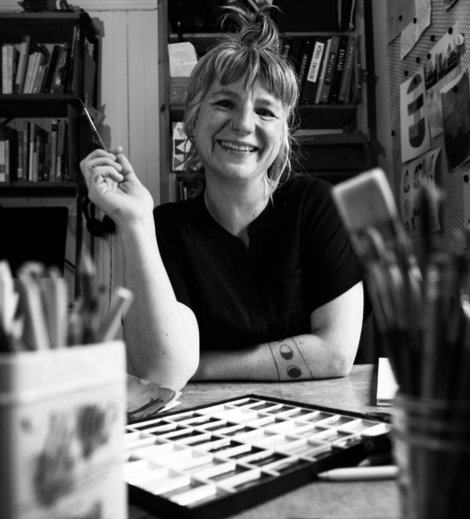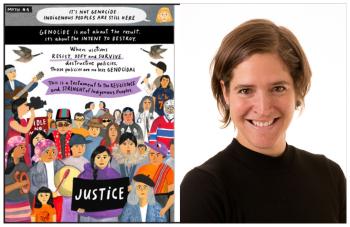Image Caption
Summary
Local Journalism Initiative Reporter
Windspeaker.com
Can a 12-page graphic guide relay the message that two volumes and more than 1,200 pages from the National Inquiry into Missing and Murdered Indigenous Women and Girls had a difficult time doing?
The Native Women’s Association of Canada (NWAC) is counting on it.
The guide is their tool to demonstrate that Canada has perpetrated and continues to perpetrate genocide against Indigenous people.
“When the inquiry released its final report in 2019, many Canadians found the conclusion of genocide difficult to grasp,” said NWAC president Lynne Groulx.
“The truth is not very nice. The truth is a genocide. You can’t sugar coat it. You have to tell the truth. We can’t move forward unless we accept what happened. And what happened has to be explained very carefully. It is a very difficult topic.”
At a June 19 event, NWAC launched its graphic guide “Genocide in Canada: A Legal Explanation” written by lawyer Fannie Lafontaine and illustrated by Chloloula.
“I know how legal documents are hard to understand,” said Lafontaine. “The book is really a simplification of a long legal analysis that basically explains what is genocide.”
In straightforward sentences and concepts highlighted by illustrations, Lafontaine explains the “inescapable conclusion” of how Canada has and continues to commit genocide against Indigenous peoples.
Genocide is not only mass murders and massacres, said Lafontaine.
Genocide is both lethal and non-lethal measures which inflict conditions on life that can lead to destruction. Those measures include lack of health services, food and adequate housing; forced or coerced sterilization; and taking children away.
“Genocide is about the intent to destroy a group for what it is as a group,” said Lafontaine.
“The book explains that different to massacres committed by individuals or racist regimes and very time intensive periods, it's a genocide that occurred through policies and actions that together constitute a violation of international law. It's not one act. It's called the composite act,” she said.
Lafontaine’s words are strengthened by Chloloula’s illustrations.
“I used water colour to try to add a sensitive touch to address the emotional side of the people and not just the intellectual side,” said Chloloula.

That “emotional side” comes through clearly in the double row of red, yellow, blue and other coloured children’s shoes lined up outside a grey residential school and a landscape dotted by red dresses and black oil pumps. Running through the frame is a blood red path.
“The violent conduct and the intent to destroy are structural and systemic, and cross multiple administrations and political leaders,” reads the text on that page.
Green Party leader Elizabeth May recalled how the word “genocide…became the debate” when the national inquiry released its final report and the 231 Calls for Justice.
The inquiry included a 46-page supplementary report entitled “A legal analysis of genocide” and stated, “The report highlights that the thousands of truths shared before the National Inquiry reinforce the existence of acts of genocide against Indigenous women, girls, and 2SLGBTQQIA people.”
“I’m so grateful that you’ve taken the volumes that I read…(and put) this together,” said May about the graphic guide.
She was the only federal political leader to attend the Monday event in Gatineau although all leaders had been invited.
May also expressed disbelief that so little action had been taken in the four years since the inquiry wrapped up.
According to a CBC report card, only two of the 231 Calls for Justice have been completed. Calls tackle reforms in 18 areas, including education, justice and health.
Groulx said it is the goal of NWAC to see the graphic guide included in libraries and as part of curricula at universities and colleges. She said she would also like to see the guide in high schools.
“This is a very helpful publication that we believe will be making a great change. We’re shifting minds and shifting hearts…The images are shocking. It is really shocking what happened to Indigenous people in this country,” she said.
Groulx said they are undertaking a “very robust” campaign, including writing letters to ministers and posting on social media.
Groulx was also “being active” at the international level, attending the Organization of American States (OAS) on June 20, headquartered in Washington. OAS has 34 active member states and focuses on four key pillars of democracy, human rights, security and development.
The guide is available by subscription to an NWAC newsletter. Find that here https://teachthegenocide.ca/
Local Journalism Initiative Reporters are supported by a financial contribution made by the Government of Canada.

